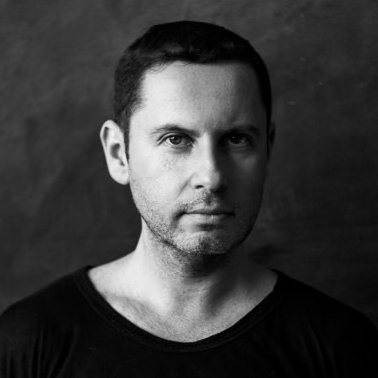I hate corduroy, but I like people who change my mind about things. The man who did change my mind about the velvety ribbed fabric is Italian designer Massimo Alba. The corduroy he uses for his duster coats and suits is called needlecord, and it is fine and supple beyond belief—hard proof that there are no bad materials, only bad versions of materials.
And, yes, Daniel Craig wore one of Alba’s needlecord suits in No Time to Die, if you must know. (It’s also been reported that Tom Cruise, Leonardo DiCaprio, Stanley Tucci, John Malkovich, James Franco, Justin Bieber, and Sir Ian McKellen have been seen wearing Alba’s clothes.)

Materiality is central to Alba, who has elevated Italian sartorial nonchalance to an art form. (Just don’t call it sprezzatura, a concept Alba finds contrived.) Spend even a little time with him and you’ll inevitably witness him lost in a reverie about the beauty of this or that fabric. It is such attention to detail that makes Alba’s clothes stand apart. He imbues his T-shirts with as much easy grace as he does his linen suits and overcoats, which over the past 15 years have become a de rigueur uniform in certain fashion circles.
“He’s unique in how he approaches designing and, more importantly, making clothing,” says Josh Peskowitz, a renowned fashion consultant. “His philosophy is soulful, his materials and colors are unmatched, and his clothes are meant to last both stylistically and in construction.”
The wearer is an indispensable part of Alba’s world. “It’s all about the people I know that I have met over the years,” he says. His clothes are not for the ostentatious party animal or the suave, overly groomed power broker, whom you’re more likely to find dressed in Versace or Armani. Alba says that he dresses men and women with a worldly bent: the literature professor, the author, the artist, the critic, and others who have retreated amid the tiresome onslaught of popular culture.

Alba looks like an artist of a certain age. His shoulder-length hair and neatly trimmed, graying beard bespeak both intelligence and emotion, and a kind of world-weariness that is quickly dispelled when he begins to talk with the passion of a man who cares deeply about what he does. He will tell you about the importance of making his clothes in Italy, the disheartening decline of the country’s manufacturing sector, and its takeover by fashion conglomerates. He will tell you about the degradation of quality in clothing and the rush to the lowest common denominator. He will tell you how hard it is to have an independent brand today. Alba goes from topic to topic with the urgency of someone who’s yearning to be understood.
In an age when cutting corners has practically become an industry standard, Alba’s pursuit of quality is borderline manic. “Massimo is the embodiment of a mindset that has become exceedingly rare in corporatized luxury: that it’s better to be everything to someone than to try to be something to everyone,” says Peskowitz.
That Alba’s clothes are made in Italy is of the utmost importance to him. “It’s not that they don’t know how to make clothes in other countries,” Alba says, “but clothing manufacturing is so much in the blood of Italy that it is imbued with a certain attitude that you just cannot replicate.” Such romanticism is the backbone of everything Alba designs.

A perfect representation of Alba’s labyrinthine, inexhaustible mind is his Milan boutique, in Brera—he has six stores in total, all in Italy—where you will find yourself in the midst of a carefully calibrated explosion of objects, plants, books, textures, and colors. Pages from old books line the walls; his jackets hang in old, reworked wardrobe cases; and soft knits spill from the shelves. It is a store, a living room of your favorite uncle, and a closet of your impeccably dressed friend, all at once.
One of Alba’s dreams is to open more of his own stores abroad. Partly to continue telling his story, and partly because he is frustrated with the way fashion retail operates today—and there’s a big audience for his clothing outside Italy, particularly in the United States. “My concern is that they [stores] do not understand that the market is difficult because they are all buying the same things, from Alaska to Capri,” he says.

For a man who has much to say but is confined to fabric and scissors as a medium of expression, Alba has found an ingenious way to communicate: a handkerchief. Handkerchiefs are Alba’s paper, on which he writes and draws, sometimes seriously, and sometimes irreverently. It could be a David Bowie lyric from “Let’s Dance” or a print of a rhino, the deadliest of hunters, overlaid with the words I’m So Glad I Found You.
Though my favorite, perhaps because it represents Alba so well, is a print of a bird taking flight off of a man’s hand. It says, Welcome to my soul.
Eugene Rabkin is the founder and editor of StyleZeitgeist and the author of Stone Island: Storia. His work has appeared in The New York Times, the Business of Fashion, and other publications


